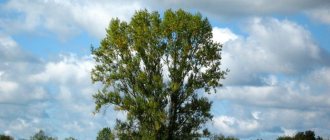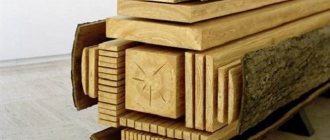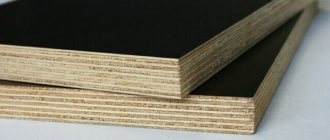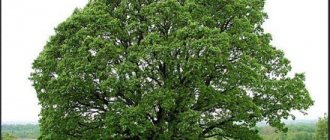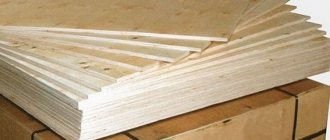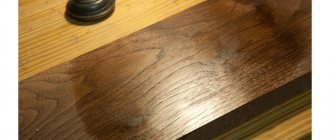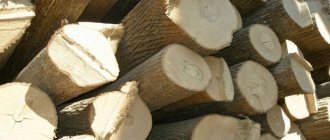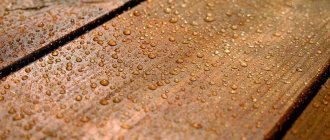Poplar (Populus) belongs to the genus of deciduous representatives of the flora that are part of the Willow family (Salicaceae). Such plants grow mainly in the northern hemisphere, where a temperate climate prevails, while the subtropical Chinese regions are recognized as the birthplace of poplars. They are also found on the American continent to the southern regions, reaching Mexico and are not uncommon in eastern Africa. It is noteworthy that forests where most of the trees are poplars are called poplars. Most species in natural conditions for growth prefer valleys of river arteries and well-moistened slopes; they can also withstand swampy soil, although they grow better on a rich and aerated substrate. Although poplar is considered a fast-growing crop, its growth rate will be consistently high for 40–60 years, after which it steadily declines. There are varieties that can live up to the age of 120–150 years, but since they mainly suffer from fungal diseases, the average life expectancy is 60–80 years. There are more than 95 species of poplars in the genus, which are usually divided into six sections.
| Family name | Willow |
| Growth period | Perennial |
| Vegetative form | Tree-like |
| Reproduces | Generatively (seeds) or vegetatively (cuttings or root suckers) |
| Timing of transplantation into open ground | Early spring or October |
| Landing rules | At a distance of 30–60 m from any buildings and 3.5 m from each other |
| Priming | Light, fluffy, nourishing and aerated |
| Soil acidity values, pH | 6.5–7 (neutral) |
| Light level | Place with good lighting |
| Humidity level | Regular and abundant watering, especially in dry times |
| Special care rules | Trims recommended |
| Height options | 40–45 cm, often reaching 60 m |
| Flowering period | From the end of May |
| Type of inflorescences or flowers | Cylindrical brushes that look like earrings |
| Color of flowers | Male flowers are red, female flowers are yellow with a greenish pistil. |
| Type of fruit | The seed capsule is black or brownish-black in color |
| Fruit ripening time | In June |
| Decorative period | Spring Summer |
| Application in landscape design | As a tapeworm, in group or alley plantings |
| USDA zone | 4–8 |
There are versions that the genus received its scientific name because of the word “populus”, which means “people”, and since the plant produces multiple branches from the base and poplars were bred near places where popular meetings were held. But until now the origin of the Latin name remains completely unclear. It is believed to have Gaulish roots or a connection with the Greek term for "elm" (ptelea). But other versions point to a derivative of the Latin word "opulus", which means "maple", since there are similarities in the outlines of the leaves of white poplar and Italian maple.
The Russian word “poplar” appears to have roots in the Slavic “top”, meaning “swamp” or “swamp”, indicating the plant’s preference for marshy areas.
All types of poplars are large-sized perennial trees. Their height reaches 40–45 m with a trunk diameter of more than 1 m. The poplar crown can take pyramidal, ovoid, pyramidal-ovoid or tent-shaped outlines. The bark covering the trunk is fissured and has a dark gray or brownish-gray color. On the branches it is smooth and has a gray or olive-grayish color.
The poplar's root system is strong; most of it is located superficially. Root shoots tend to extend far beyond the projection of the tree crown. The foliage on the branches grows in regular order, attached by petioles. The surface of the leaf blades can be either pubescent or bare. The shape of the leaves varies from broadly ovate to lanceolate, but the outline directly depends on the branch on which the foliage unfolds and on the location on it. The surface of the leaves is covered with reticulate veins.
Poplar is a dioecious plant, in rare cases it acts as a monoecious plant. Flowering begins before the leaf blades unfold or simultaneously with this process. Fruiting occurs in poplar plantations when they reach the age of 10–12 years. Flowers are collected into inflorescences that resemble earrings, but in fact they are spike-shaped racemes with a cylindrical shape. They grow erect or pendulous. Male poplar flowers have a reddish tint of earrings, while female ones are characterized by a yellow tone with greenish pistils.
Poplar inflorescences fall off as they fade or their seeds fall out. Each of the flowers is located in earrings in the axil of the bract, which has a finger-like dissection. Above the flower there is a kind of disk, which in pistillate flowers takes the form of a glass or saucer, and in staminate flowers it looks like a plate. There are from 3 to 60 stamens in poplar flowers. They have a shortened filament and an anther with a pair of sockets. In rare cases, flowers are formed bisexual. Pollination occurs through the wind. Pollen from male flowers is transferred to female flowers.
The fruit of the poplar is a capsule, which, when ripe, opens into 1–2 pairs of valves. The box contains small seeds, with an oblong or ovoid-oblong shape. The color of the seeds is black or black-brown. The length of the seed varies between 1–3 mm; a tuft of a large number of hairs is formed at its base. Such hairs are thin and silky and form the so-called “poplar fluff”. If we talk about the size of poplar seeds, then there are a thousand of them in 1 gram.
But, despite the large amount of seed material, its germination rate is quite low and if the seeds do not land on favorable soil, they quickly disappear. Thanks to the fluff, poplar seeds have the ability to cling to something (a twig, pebble, straw or other suitable hook). If this does not happen, the fluff carries the seeds further.
Curious!
The release of fluff occurs only in female plants, and male specimens are completely harmless, therefore, when planting, they try to prevent the appearance of female trees. At the same time, plants have the ability to change their sex, and it happens that female catkins are formed on male trees. This happens in places where the environmental situation is unfavorable. For this reason, it will not be possible to solve the problem of poplar fluff by culling female trees.
It is easy to determine the sex of a poplar during the flowering period. To do this, the flower bud is removed, broken and examined under a magnifying glass. In male trees, when cut at the bud, the anthers are somewhat like grains, which is not the case in female trees. They are characterized by the presence of an ovary with a stigma primordium.
These trees not only serve as natural air filters, but can become a decoration for any alley in a personal plot, without requiring much effort from the gardener when growing them.
Description
There are approximately 100 species of poplars (the Willow family), united by the genus Populus. Translated as “people” (from Latin).
In nature, it often grows near rivers with moist soils. Poplars grew in ancient Greece.
This is one of the fastest growing trees, so it has taken root well in cities. Its unpretentiousness and survivability, where others would have died long ago, make it simply irreplaceable in polluted megacities.
Some types of poplars live up to 40 years, others up to 70-80 years. Growth slows down at the age of 50; there are old-timers - up to 150 years. Red Book Black poplars can be found for up to 400 years.
Answers to crossword of the day No. 22766 from Odnoklassniki
22765 22767
Horizontal: - A tree of the poplar genus - Antipathy - What was the surname of False Dmitry the 1st - Acrobat on the horizontal bar - Horse-drawn horse racing - This is a pentagon of quality, and Aries, and a comma, and a road brick - Anna, described by Sergei Yesenin - Bard - a guitar , her - akynu - Russian athletes in the service - Name of the creator of Pluto and Donald - Simple tobacco - Part of a curved square - “Everything ... is closed and sealed for the winter” - Double-ended piece of wood - Trunk as a future table - French writer Francois .. - “Working tool » singer - Place of Buddhist pilgrims - Subtle hint - Bangladeshi main city - “Open up, police!” (French actor)
Vertical: - Famous Jewish female name - Agricultural culture of Central America - Theater in a box at a Russian fair - Carbolite as a polymer - Zita's sister in an old Indian film - The nitrous of this gas is an "intoxicating gas" - Just a "dark" quantity - Actress Courtney ... and coal product - A famous female name - A letter of the Greek alphabet - What will come out of the word “Karen” if the letters in it are swapped - Strong twisted cotton paper threads - An old Russian boot with a curved toe - A slave of our first Brazilian TV series - A crooked saber or a warrior of the Sultan - A device for backyard girlish fun - Jules ... (French composer) - Luxurious wooden house in Rus' - Brand of chocolate with a girl on the cover - Stink - Pivbar - Legally formalized care - “Body” of Mother Nature - “Dead Souls” (first illustrator)
SOKOR - 1. A tree of the willow family with gray bark that turns black over the years, with a powerful crown and a high trunk; black poplar. 2. Wood from such a tree.
HATE - Dislike, unfriendly, hostile attitude towards someone, something.
GYMNAST – Female. to noun: gymnast.
HORSE RACES pl. Riding horse competitions.
SIGN - 1. A sign, sign by which something is recognized, recognised. // Brand, mark. 2. That which serves as an indication of something, evidence of something, an external detection of something. // Sensual expression, external manifestation of something. // Omen, harbinger. 3. An object that is a sign of belonging to something, a symbol of something. 4. A gesture expressing the will, desire, order of someone. 5. An object or action as a symbol for something; signal. 6. An image with a known conventional meaning. // Written representation of speech sound; letter.
DOMBRA - see dombra.
DOMBRA and DOMBRA - Kazakh folk two-stringed musical instrument with a pear-shaped body and two strings.
MAKHRA - up-down. Same as: shag.
SECTOR - 1. Part of a circle bounded by an arc and two radii (in mathematics). 2. Area bounded by radial lines.
SECTOR - 1. Part of something. squares; area, area. 2. A component of something. // Department in an institution or organization.
STICK - 1. A part of a thin trunk or thick branch separated from a tree and cleared of shoots. // decomposition Something that resembles such an object. 2. An object adapted or processed in a certain way for support when walking or something. for another purpose. 3. transfer Violence, coercion based on fear.
STICK - 1. see sticks.
RAW MATERIALS avg. 1. Material intended for further industrial processing and manufacturing of the finished product. 2. transfer decomposition What is not fully finished is not properly finished.
VOICE - 1. The sound of the vocal apparatus, characterized by individual characteristics of sound reproduction (pitch, timbre, etc.). // Sounding speech spoken by someone. words. // Sounds accompanying crying, sobbing, etc. // Scream, birdsong, animals howling. // Sounds accompanying action, movement, activity, etc. something 2. Sounds made by a person when singing; ability to sing. 3. The sound of a musical instrument. 4. A separate independent part in a vocal or instrumental piece of music. // outdated Motif, melody. 5. transfer Internal conviction of the need for something. action, premonition of smth. and so on. 6. decomposition Opinion, judgment. // The style of a writer, artist, etc., which determines his creative individuality. 7. The right to express an opinion when resolving issues in government bodies, public organizations, etc. // Opinion, judgment expressed by someone. way. 8. outdated Influence, weight.
KAPOK - Fiber from the fruit of the cotton tree, which is used for stuffing life belts, rings, upholstered furniture, and also as a sound and heat insulating material.
NITROGEN is a chemical element, a colorless and odorless gas that makes up the bulk of the air and is one of the main elements of plant nutrition.
DARKNESS - clear 1. Lack of light, lighting; darkness, gloom. // Dark or poorly lit place, space. // Time of day when the sun is not shining. 2. State of blindness. // transfer Ignorance, lack of education, cultural backwardness. 3. transfer The unknown. 4. transfer Usage when indicating an indefinitely large number of someone or something.
DARKNESS - outdated. 1. An army of ten thousand people (in Rus' in the 9th-13th centuries).
Coke - Solid fuel obtained from coal, peat, etc. by heating without air access.
SIGMA - The name of a letter of the Greek alphabet.
KENAR - colloquial. Same as: canary.
CROSH Wed. several 1. Strong twisted threads. 2. Lace made from such threads.
MAMLUK - see Mamluk.
ROPE - A rope with handles at the ends, through which children jump, twisting and throwing it over their heads.
HOROMY pl. decomposition A large residential building (usually with a significant number of interior spaces).
stench - disgusting smell, stench.
KABAK - 1. Drinking establishment (in the Russian state until 1917). 2. transfer decomposition A place, a situation, reminiscent of such an establishment in its disorder, noise, and lack of cleanliness.
KABAK - local. 1. Same as: zucchini.
CUSTODY - 1. Organized and state-controlled protection of the personality of incapacitated people (minors, the mentally ill, etc.), care for their rights, upbringing, property, etc. // State-controlled surveillance of the property of incapacitated citizens. 2. decomposition Persons or institutions entrusted with guardianship; guardians. 3. Caring for someone or something; supervision.
LONO avg. 1. outdated Breast (as a symbol of motherhood, tenderness, affection), womb, loins of a woman. // transfer Something that is a shelter, a refuge for someone, something. 2. transfer That which surrounds someone or something. (about the surface of the water, the bowels of the earth, etc.).
Why did they start planting poplars in cities?
Poplars have been used in urban landscaping since 1946. After the Great Patriotic War, it was necessary to restore the appearance of Moscow as quickly as possible and replace the lost trees. It should be noted that previously in landscaping to create parks, gardens, shady areas, hedges and protective strips, coniferous and deciduous tree species were used - spruce, pine, larch, birch, bird cherry, apple tree, maple, ash, elm, oak, as well as shrubs - lilac, hawthorn, mock orange, acacia, bladderwort and some other species, but poplar was not used for these purposes.
The lost mature trees urgently needed to be replaced with something. Dendrologists suggested Balsam Poplar - it is distinguished by its rapid growth, dense crown, ease of reproduction, resistance to urban conditions, decorative appearance, occupies a smaller area than other trees, due to the compactness of the crown, and is relatively cheap. The proposal was considered, the landscaping program was approved by Stalin, and poplars came to Moscow and began their victorious march across the country. And, by the way, they fulfilled their task perfectly. But…
When does poplar bloom?
Flowering directly depends on the region, approximately in May, in the south - in April. It is interesting that before or during the blooming of the leaves, the poplar flowers begin to bloom - catkins of different sexes: male and female. They are pollinated by the wind.
The flowers contain a lot of pollen, so poplar is a good honey plant.
Many allergy sufferers are concerned about how long the poplar blooms. In the south, flowering may begin at the end of March, in the northern regions - in May. Basically, this is the 2-3rd decade of April. And the fluff will appear in a couple of months (with seeds) - in June-July. It all depends on the region and climate.
Where cherries grow - conditions for the maintenance and growth of the tree. Tips for choosing a place on the site and choosing neighbors for cherries (145 photos)Growing figs at home - tips and instructions for care and maintenance indoors (155 photos and videos)
- Norway spruce - general information, description, properties, characteristics and cultivation features. 105 photos of using spruce in landscape design
Only at the age of 10 will there be flowers and fruits. It is the fruits of the tree (boxes with fluffy fibers) that worry local residents.
The flowering period of poplar is approximately in June-July; ripe fruits with seeds are torn from the branches and the wind scatters them throughout forests or city squares.
Everyone knows from childhood how poplar blooms - it's white fluff. But this can be easily avoided if you plant only male trees.
Now they have begun to take this into account so as not to cause allergies among city residents.
Types of poplars
The genus includes about 90 species. Most of them are wild trees. Many representatives are the work of breeders. These hybrid poplar species combine decorative properties and resistance to adverse conditions.
White or silver
White poplar (Populus alba) is found under different names: silver, belle, snow white. Most common in Asia and Europe. Trees of this variety grow up to 30 m. White poplar is a long-lived tree, its age reaches 65-400 years. The poplar trunk is short but thick. The crown is spherical. The branches begin to grow at a height of 2 meters from the soil. The bark is gray and smooth, sometimes with a greenish tint. In trees that are too old, the color of the bark becomes almost black.
Small silvery buds appear on the shoots. The leaves appear deltoid in shape. The leaf blade is green on top and light silver underneath.
In spring, elongated inflorescences cover the shoots. The seeds resemble cotton wool that scatters throughout the streets. Active flowering occurs in mid-May, seeds ripen by July.
Canadian view
Canadian or delta poplar (populus deltoides) is the work of breeders. Externally, this hybrid resembles a delta-shaped tree. The variety is distinguished by its large height and spreading crown. In spring, large brown buds, abundantly covered with gluten, appear on the tree.
The leaves are shaped more like a triangle, with small teeth along the edge. Width up to 10 cm, length up to 7. Attached to shoots on a cutting 3 cm long.
Poplar catkins form during the period when the buds swell. Full flowering begins in April. At the beginning of summer, seeds form and disperse over a long distance. Canadian poplar is considered the tallest.
Black poplar (sedge)
In the middle zone to Perm, as well as in the Crimea, Central Asia and Western Siberia, black poplar (Populus Nigra) grows. This is a powerful tree that chooses light forests, river banks with loose soils.
The bark of young specimens is initially light gray and smooth, but over time it becomes almost black with cracks. The leaves are diamond- or triangle-shaped and dark green. The plant is hardy and easily tolerates cold winters and periods of drought. The plant is undemanding to soil, but develops much faster in nutritious soils with a high humus content.
Sweet poplar
The most common fragrant poplar (Populus Suaveolens) is in Siberia (its eastern part); the Far East is considered its homeland. It is also found in Northern China and Mongolia. The maximum height is about 20 m. Alleys of this ordinary, familiar poplar are found on many streets of Russian cities.
The plant is represented by a large tree, its height reaches 20-25 m. The branches grow at an angle of 70°, forming an oval crown. Its diameter reaches 15 m. The bark of young branches is thin and smooth, has a gray-green or yellowish color. As the bark grows, it ages and cracks appear. The leaves are oval with a narrow tip, length is 10 cm, width – 6. The color varies from olive to light green. The bottom of the leaf plate is slightly silvery. A network of veins is drawn on the surface.
The fragrant poplar is not too demanding on the composition of the soil, but the plant is most suitable for black soil or clay areas. It is characterized by high frost resistance; frosts up to 40 ° C are not terrible.
It blooms simultaneously with the leaves blooming, by mid-June it is in full bloom and poplar fluff is scattered throughout the streets.
Pyramid view
The tallest variety of poplars, loving light. The height of the trees is 35-40 m. The duration of existence is about 3 centuries. Pyramidal poplar (Populus Pyramidalis) mainly grows in Central Asia, Russia, the Caucasus, Ukraine, and Italy.
It grows well in illuminated areas with slightly acidic or neutral soil. It grows and develops as quickly as possible in the first ten years. Powerful shoots are located at an angle of 90° to the main trunk. A narrow crown is formed.
The bark on top is dark in color, all covered with small cracks. The trunk diameter of adult poplars can exceed 1 m. Young shoots are covered with smooth light green or olive bark. The flowers are united in elongated inflorescences and appear immediately after the first leaves appear.
The leaves are deep green above and light below with a finely toothed edge. The pyramidal species grows well in city conditions; it is not afraid of exhaust from cars and enterprises.
Laurel poplar
Grows in Siberia. Laurel poplar (Populus Laurifolia) reaches 18 m and grows well in shady places. The tree has a beautiful wide tent-shaped crown.
The leaves are rich green, lanceolate in shape, attached by shortened cuttings to numerous shoots. It looks like the leaves are growing in bunches.
This species does not develop very rapidly, but it tolerates the smoke of city streets better than anyone else.
Planting and caring for poplar when grown in open ground
Usually we are used to seeing poplar trees along roads, but when planted in a garden or cottage, beautiful compositions can be formed and this does not require much effort.
- Place for planting poplar.
You should not place poplar plantings near the house, garden buildings or gazebos, and you should not plant them next to paths, since the root system, which is distinguished by its power, will cause a lot of trouble over the years. The recommended distance should be at least 30–60 m from any buildings or paths. In any case, it is recommended to choose an open and well-lit area of the garden for poplar plants. - The soil for poplar
is selected as ordinary garden soil, characterized by coolness. Light, well-aerated compositions that are nutritious and rich in microelements are preferred. Wet soil is not suitable for many species, but there are hybrid forms that are not afraid of waterlogging. Species such as large-leaf poplar Aurora prefer a fertile soil mixture that contains river sand, peat chips and turf soil. Therefore, if the substrate on the site does not meet such conditions, it is recommended to apply additional regular fertilizing. When the soil on the site is heavy, then during planting you will have to provide high-quality drainage using pieces of broken brick, crushed stone or expanded clay. - Poplar planting.
To do this, you need to dig a hole so that its volume reaches a cubic meter or less. However, the exact parameters of the planting hole and the distance between them directly depend on the type of plant chosen; this information can be obtained from the nursery where the seedling was purchased. It is advisable to treat the substrate inside the dug recess and on its walls. It is the presence of a loose substrate that will have a good effect on the growth of the seedling. Before planting, if necessary, a drainage layer is laid in the hole and a peg is installed to tie up the plant, after which a small layer of soil mixture is poured and about 30 liters of water are poured. After all the moisture has been absorbed, you can place the poplar seedling in the planting hole. All voids in the recess are filled with soil and carefully compacted to remove voids. A watering edge is formed around the perimeter of the tree trunk circle so that the water is directed to the roots of the plant when watering. The seedling must be tied to a peg and watered abundantly. If group planting of poplars is carried out, it is recommended to leave at least 3.5 m between seedlings. To ensure that moisture remains in the soil longer, the tree trunk circle of the seedling should be mulched immediately after planting. To do this, a layer of peat chips, humus or sawdust is poured there. This will also prevent weeds from growing quickly. - Watering
when growing poplar is a rather important aspect, since the plant is characterized by nature’s great love for well-moistened places. After planting, during the first year, watering is carried out every 2-3 weeks, and special attention is paid to this during the dry and hot season. After each watering, it is recommended to loosen the tree trunk circle, so that it retains moisture longer, and also renew the layer of mulch. - fertilizers
when the soil on the site is depleted, as well as to maintain the growth of the tree. For this purpose, fertilizing is used, which contains nitrogen, which promotes the growth of leaf mass. Additionally, you can use nitroammophoska, at the rate of 100 grams of the drug per 1 m3. - pruning
is recommended to be done in the autumn-spring period, namely from October to April, when the plant has completed its vegetative activity. After planting, it is recommended to leave intact only one apical branch, which grows vertically upward - this will allow the poplar to stretch in height. When pruning, the criterion is that the shape of the crown should be even and shoots should not stick out from it. With the arrival of spring days, it is necessary to remove all broken and shriveled branches during the winter, as well as twigs in the lower part of the trunk. To rejuvenate a poplar, when it reaches the age of 30–40 years, you can cut off the shoots to 15–20% (about 2/3) of their height or even more. The plant tolerates such procedures well, but immediately after pruning, it is recommended that all sections whose diameter exceeds 2.5 cm be thoroughly treated with garden varnish or painted over with oil paint made from natural drying oil. If you want to mold the crown, then such actions are possible in the second year after planting the poplar seedling. After pruning, it is recommended to fertilize. When growing columnar poplar, pruning is not performed. - General care tips.
When growing poplar, it is important that the soil surface does not become sod. This can even lead to the death of such trees. To eliminate this aspect, it is recommended to plant shrubs nearby. After the snow has melted on the site, it is necessary to pierce the substrate near the root zone of the poplar. Such actions will help to avoid the possibility of stagnation of accumulated moisture in the future. The depth at which the punctures are made is 15 cm. The same operation is recommended to be performed on autumn days before cold weather. The root system of young plants should be covered to protect them from frost with a layer of fallen dry leaves or mown grass. It is necessary to remove root shoots in a timely manner so that after some time such poplar plantations do not fill everything around. - The use of poplar in landscape design.
Since the plant has a high growth rate, as well as a crown of decorative outlines and foliage, it is widely used in landscape design. All its varieties are good, both as tapeworms and in group plantings, or with the help of poplars you can form spectacular alleys. But not only the shape of the crowns of poplar trees is interesting in parks and gardens; with the arrival of autumn days, the leaves acquire a yellow or golden color, decorating everything around. Naturally, it is better to choose male plants for landscaping, since poplar fluff does not form on them.
See also agricultural technology for growing caragana in the garden.
Features of poplar
Poplar is related to the class of dicotyledonous deciduous plants, while it is part of the Willow family. The plant grows rapidly during the first 40–60 years. After this, it begins to grow more slowly. On average, the lifespan of a poplar is from 60 to 80 years. However, there are specimens whose age ranges from 120 to 150 years.
This tree can reach a height of about 40 meters, and its trunk in diameter can be up to 100 centimeters. The shape of the crown directly depends on the species and can be pyramidal, ovoid or spherical. The surface of the trunk is covered with gray bark, which may have a light black or brown tint. Over time, a large number of cracks form on the bark. The surface of the gray branches is smooth and even, and it has a delicate olive tint.
The poplar root system is quite powerful and well-formed, often superficial. Over time, the roots grow beyond the crown boundary. The alternate green leaf blades may be lanceolate or ovoid in shape. The surface of the foliage is covered with clearly visible reticulate venation.
This tree is characterized by rapid growth and development. Its wood is used in both the wood and furniture industries. The first time a poplar produces seeds only after it is 10–12 years old. Flowering begins simultaneously with the opening of leaf buds. In some cases, the tree blooms even before the leaf blades open. Hanging spike-shaped inflorescences called catkins are formed on the branches. After pollination, a single ovary is formed. When the poplar fades, in place of each flower a fruit is formed, which is a box with 2 to 4 valves. Over time they open up. The box contains oblong, very small seeds 0.1–0.3 cm long. There are approximately 1 thousand pieces in 1 gram of seeds. Each of the seeds has a whole bunch of thin hairs, thanks to which, with the help of the wind, they can “fly” a decent distance from the parent tree. This phenomenon was called “poplar fluff”. Already next spring, young shoots can be found at a distance of several kilometers from the mother plant.
Why did they plant poplars everywhere in the USSR?
How to fix the situation?
The only way, in my opinion, to radically change the situation is to replace Balsam Poplar and Pyramidal Poplar within a few years with other non-fruit-bearing types of poplars, for example, Berlin Poplar. True, utility services do not want to hear about this, citing the excessive cost of the event and lack of funds. Choosing a suitable replacement crop is, of course, not an easy task. How to avoid getting burned again. But this must be done, otherwise the torment will continue to last.
It is possible and necessary to carry out competent pruning of poplars, forming them “from a young age” into a tree with several skeletal branches, and not into one bare trunk with thin branches, as is now done with mature, 50-60-year-old trees.
Useful properties of poplar
Poplar is indispensable for its unique ability to purify air from various gases, smoke and harmful substances. This is the best tree for endurance and cleaning the environment, it has no equal. In terms of the amount of oxygen produced, poplar is much superior to the famous pine or spruce.
In large cities it is an important element for maintaining the environment. Used in squares, parks and along highways.
Wood is used as raw material for the production of paper, plywood, matches, and charcoal.
The tree is also often used by wood carvers. The lightness of poplar bark is used for floats.
Silk, furniture, and containers are made from wood. Paint is prepared from poplar leaves.
Reference! Poplars sometimes change gender! Sometimes female catkins may appear on a male tree. Scientists consider this phenomenon to be the influence of negative ecology.
Meaning and Application
Poplar wood is widely used for industrial purposes. It is distinguished by its softness and lightness. Wood is used for the production of: rayon, lumber, boats, paper, plywood, furniture, etc.
Such wood has low thermal conductivity, but it is still used for preparing firewood and making charcoal, which are of low quality. The foliage is used to make yellow dye, and the buds are used to make purple dye. Young shoots, as well as stems with foliage, are used as food.
Applications of poplar and interesting notes about the tree
Despite the fact that many people do not like the time when poplar plantations cover everything with fluff, it is worth recalling the benefits and some aspects of the use of this plant. Poplar is characterized not only by a high growth rate, which is beneficially used in landscape gardening, but also helps to purify the air from urban pollution (gas and smoke). In addition, it helps to destroy pathogenic microbes. At the same time, no other representative of the flora, not even conifers, can compare with it in terms of air filtration.
Poplar wood is soft and is successfully used in industries such as construction, furniture or paper industries. In order to use poplar wood with specified characteristics for industrial purposes, work is being done to develop hybrid and genetically modified varieties. Poplar foliage and inflorescences serve as the material from which natural-based dyes are made - yellow and violet, respectively.
Medicinal preparations are prepared from the buds of black poplar species, and they are also included in the popular Riga balsam. The shoots can be used as branch fodder for livestock feed.
It is curious that if the poplar growing near the house has a height of 50–60 m, then it can serve as a real lightning rod.
Since it has been found that some species of the genus have the property of not producing fluff, they are actively used in the green architecture of cities and park areas. Similar exceptions are laurel-leaved and pyramidal poplar. They try not to get rid of old poplar plantations, but carry out pruning in such a way that for about five years they will not encounter the problem of poplar fluff.
However, this aspect is not the problem with old poplar trees. Since the wood of the plant is not only soft, but can also easily rot, and the root system becomes extremely weak, such specimens may not withstand gusts of wind. Such a poplar can fall at any moment in windy weather or a thunderstorm and fall on the road or residential buildings. The worst case scenario would be a fall on a person or vehicle, so plants that have reached 60–80 years old must be inspected and removed if any traces of rottenness are detected.
How does poplar wood work?
Poplar is relatively easy to work with. Because it works well with a saw, lathe and router. The main thing is to make sure that the cutting tools are sharp enough. Poplar tends to “tear” if the sharpness of the tool leaves much to be desired.
To avoid this problem, it is also recommended to reduce the feed speed. It is also worth drilling poplar at a lower number of revolutions per second than for other hardwood trees.
Because poplar wood is relatively soft, it must be sanded in several stages. With a gradual increase in the number of grains. Then sandpaper with a finer abrasive will remove marks and scratches. Which remained from the coarser faction at the previous stage.
Most craftsmen recommend starting with 80-grit sandpaper and then gradually increasing the number. Gradually moving to fractions of 150, 220, 300 and finally 400. Then you will be able to achieve a good result.
Healing properties of poplar
Widely used in medicines: buds, seeds and even poplar bark:
- The bark contains a lot of tannins, alkaloids and glycosides - decoctions from poplar bark have a beneficial effect on the nerves.
- The astringent effect of tannins is good for treating gastrointestinal diseases.
- Decoctions from poplar buds are very useful - they strengthen the body and help with inflammation.
- Infusions from the leaves heal wounds.
- Helps with insomnia and depression.
- If you grind poplar buds into powder well with other herbs, they will stop hair loss. The ointment will revive old hair follicles.
During the famine, residents dried the bast layer (it is under the poplar bark), crushed it and added it to flour, then baked bread. The vitamins contained in poplar are beneficial for the body.
Poplar has repeatedly saved people from many troubles for a long time. Here is such a unique tree - POPLER, which has no analogues in the world.
Protection of poplar from diseases and pests when grown in open ground
Most often, poplar trees suffer from necrosis and some types of tree cancer. All diseased specimens should be cut down, and the remaining hemp should be treated with a composition of creosol and fuel oil.
While poplars are young, they can be susceptible to diseases of fungal origin. Such problems arise due to waterlogging of the soil and stagnation of moisture in it. It is important to carry out agrotechnical measures to prevent diseases - remove parts of the plant covered with various manifestations of diseases (whitish, brown or gray coating) and treat with fungicidal preparations, such as Bordeaux mixture or Fundazol. It is important not to allow the soil to become waterlogged; for this purpose, planting should not be carried out in a heavy soil mixture and watering should be done when the soil surface dries out.
Among the pests that attack poplar, there are insects that feed on young leaves and spoil the bark, among them: scale insects, patches, longhorned beetles, leaf beetles, as well as weevils, bark beetles, etc. In order to choose a means to combat the invasion, it is important to determine What kind of harmful insect has settled on the plant. In any case, broad-spectrum insecticides such as Aktara, Fastak or Vermitek are suitable.
Places of growth
Poplar is a common occurrence. It is able to take root in different latitudes and parts of the world. Each species grows exactly where the most favorable conditions are for it. For example, some can grow in Siberia, the Far East, China, others live in Mexico, America, China and, oddly enough, in Africa.
It is found on hillsides and river banks, but it is important to remember that the poplar root system is sensitive to the degree of moisture in the soil. Therefore, most often these trees are found in parks, along roads, and somewhere near swamps they cannot grow at all. But this applies to wild species.
Cultivated species behave slightly differently. They can adapt to any type of soil and are stronger than their wild relatives. It should be noted that cultivated poplar can take root even in areas with enormous concentrations of gases.
Trees grow rapidly and extremely quickly, but do not live long. The maximum age is approximately 150 years. But, of course, there are exceptions that go down in history. Long-lived poplars are quite rare, but they still exist.
Characteristic
Poplar trees belong to the genus of deciduous trees from the Willow family. They are distributed in the temperate latitudes of Eurasia and North America, while covering part of the subtropical regions of China and Mexico, and are found in East Africa.
In nature, they grow along rivers and on well-moistened slopes; some species can be found in the sand. At the same time, they need soil rich in micro- and macroelements and do not tolerate swampy areas. At the same time, cultivated plants take root perfectly on any land.
The poplar genus has more than a hundred species, which are divided into six main sections:
- Mexican - plants of this group have the smallest height. They are a cross between aspen and poplar, common in Mexico and the USA;
- Deltoid - triangular-shaped leaves are located on long petioles. These trees are characterized by a pyramidal crown;
- Leucoids - considered the most ancient group of poplars. The leaves, catkins and buds of poplar of this species are characterized by large sizes;
- Popolus or folk - representatives of this group are distinguished by the fact that their buds and leaves do not secrete a sticky substance, and they are also characterized by the presence of long petioles, which is why the foliage begins to move at the slightest breath of wind. The leaves have a palmate lobe shape and are characterized by snow-white pubescence on the underside. The most famous representative of this group is the silver poplar;
- Balsamic - the leaves and buds of trees are characterized by the presence of a huge amount of fragrant resin;
- Turangi - from a distance very similar to aspen, but have a looser crown.
Characteristics of wood
The genus Populus of the willow family includes many species.
The most famous are pyramidal, black and white poplar, and aspen, but there are many more varieties, some of which grow in nature, and some of which are grown on specially created plantations. The properties of different types are not the same, but there are several common points that determine the scope of application of poplar wood. The main reason why poplar is rarely used for the construction of permanent houses is its “capriciousness”. For plywood and boards, you can only use the top of the tree, because it often rots at the butt. The shrinkage rate of wood is quite high. In some species it reaches 50%, so that after drying the tree loses almost half its volume. Another negative feature is the tendency to warp. Both in special chambers and during natural drying, up to 80% of the material can be rejected, and the longer the boards, the higher the likelihood that they will warp.
The density of poplar is about 450 kg per cubic meter. Its wood is quite soft, but very viscous, so it splits and splits with difficulty, but it can be easily processed using hand and mechanical tools. In the past, dugout dishes, tubs, and troughs were made from this wood. And it’s not just about softness and ease of processing: many varieties have disinfecting properties. Before use, boards must be treated with protective compounds, since their resistance to decay is relatively low.
The best variety of the breed is considered to be the gray pyramidal poplar, which is a hybrid of white poplar and aspen. It is specially grown in North Africa, Argentina and Iran. It has a more expressive texture, a low degree of shrinkage, and average resistance to various loads.

